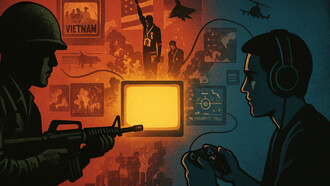The practice of teaching is a careful ritual. There're always certain traditions that needed to be carefully and repeatedly practised or simply to be avoided. Any missing act or occasional one will lead to an unexpected outcome; if not immediately then later.
The ensemble of our behaviour, language and the methods selected in teaching must have produced a reaction, positive or negative feedback. Many educators have praised and lectured about the good practice; however, today we'll talk about the "bad" practice, in the sense that this kind of practice isn't totally ineffective but simply brings disturbance to the practitioner's life.
Your peace of mind matters. Minimising the emergence of hidden nuances, that may bring pain later, is a priority. They are nuances because they are small that we choose not to pay attention to them. Eventually, the things that we unconsciously disregard always find a way to infiltrate our unconsciousness. They subliminally dwell inside it and bit by bit contribute to conceiving shapes of behaviour that may go with or against the interest of the practitioner.
We, as teachers, become what we have never expected to be. We start to act differently, sometimes we deliberately disregard our learners’ interests because we no more carry that will of fire inside us, the strong belief that we can change the destiny of those young learners. Some other times, we get mad and unbelievably disappointed because the students' performance outcome wasn’t as good as we thought It would be.
A mindful practice starts with questions that have the power to shift the position from which you see things. Since we're saturated with supervisors’ theorizing lectures and rare workshops, we promise we're not going to say more about how teaching is supposed to be, instead we will lead you through a practical way into it.
To start with, kindly bring a white sheet of paper and a humble pen that your fingers have used. Copy the following questions:
- What I am to the learner?
- What the learner is to me?
These two questions are the focal point of any formal practice. Take a few seconds, or minutes and calmly give a thought to these questions. Find an answer. Once you do, question those answers and rethink your thinking.
Now, imagine you are inside the classroom. Imagine those trivial gestures, whether they are unnecessary comments, gestures or stories. Do you see them? Do you hear them clearly? Can you express them in words or images? If yes, do it quickly.
From now on, these findings are necessary to consider whenever you are up to plan for a unit or a lesson. Be the eye that observes your behaviour. If you start to reshape your own behaviour, be sure that that of students will be reshaped too.
What to do next is up to you. Just bear in mind that you will always have a chance to have a second impression; it always takes time. For us, teachers, change is a process, we learn together along the way with our beloved students.















